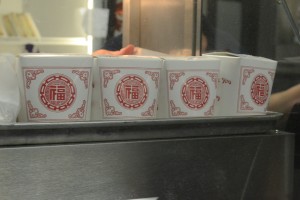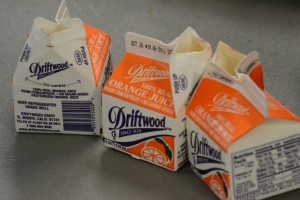This article marks the first in a series of articles which aim to take an in-depth look at food and nutritional services at Fountain Valley High School.
When the lunch bell tolls, Barons rush their empty stomachs to the closest lunch line. Students assemble, pining for their item of choice. Orange Chicken, the mashed potato bowl, and pizza are among the most popular options at FVHS. As students wait in line, they may wonder: “How did this food get here?”
The answer to this question lies in the highly directed and complex efforts of the Huntington Beach Union High School District (HBUHSD), FVHS food staff, the USDA, and the state of California.
According to HBUHSD Food Service Director Lauren Teng this process “operates like a business.” 
Government commodity providers under the USDA purchase foods from farmers and growers. Specific foods, or commodities, are then chosen by districts such as the HBUHSD.
The USDA provides these commodities and cash subsidies under the National School Lunch Program (NSLP) if Districts comply with set federal standards. Federal legislation, such as the Healthy Kids Act, decides the caloric and nutritional basis of foods in schools that participate in the NSLP.
While the Healthy Kids Act was passed in an effort by the federal government to improve the health and satisfaction of students, critics maintain that it has made foods largely unpalatable and still fails to efficiently address the nation’s obesity epidemic.
Critical groups such as the Physicians Committee for Responsible Medicine have cited their grievances, calling for a restructuring of the commodities program. They call on the USDA to “to stop putting livestock industry interests ahead of the health needs of children and to discontinue buying beef, pork, chicken, butter, cheese, processed meats, and other foods high in saturated fat.”
In the face of stringent regulations, the HBUHSD must implement procedures under USDA and California state guidelines to determine what can and cannot be on the menu at FVHS. Ultimately, the District’s scope is severely limited when deciding what goes onto the menu at FVHS.
Despite the complex issues that must be resolved when creating a menu, the District makes an effort to determine what is most palatable to students.
 Nutritional Advisory Council (NAC) groups consist of approximately sixty students from the HBUHSD who try different foods offered by different companies. There students evaluate some of the foods and recommend food items that could be used in the programs.
Nutritional Advisory Council (NAC) groups consist of approximately sixty students from the HBUHSD who try different foods offered by different companies. There students evaluate some of the foods and recommend food items that could be used in the programs.
Teng finds this important because “students are our primary customers.”
The District takes student feedback and federal guidelines in account when creating the menu. In order to satisfy all aspects of the process, a weighted analysis is performed each week. This process entails a detailed analysis of all the nutrients that a menu consists of. Fat, grain, vegetable, and meat contents are all reviewed. Calorie counting has also become a major component of this weekly nutritional analysis under the stricter standards of the Healthy Kids Act. A healthy balance is the overall goal.
“If we offer too much of an item [per week], nachos with cheese, for example, has a lot of sodium…that will skew it [the weekly nutritional analysis] to make it look like we offer too much sodium,” said Teng.
Once the NAC’s input is taken into account and federal guidelines are met, the District is able to provide food services for students.






Fantastic article! I honestly never wondered about where school lunches came from. Great job on such a unique topic!
Interesting!